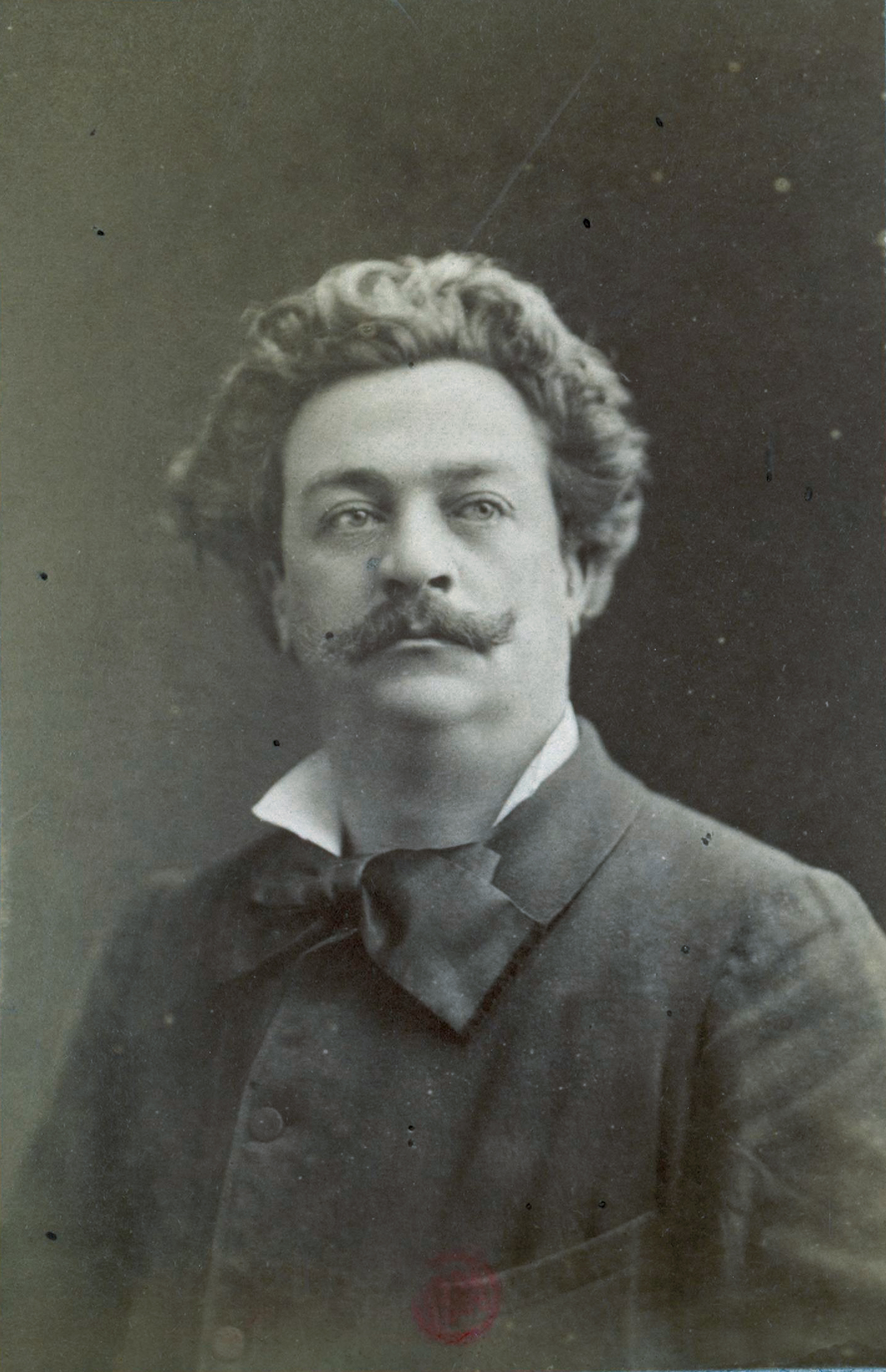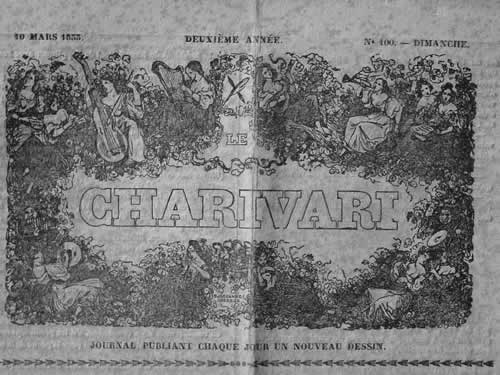|
André Gill
André Gill (17 October 1840 – 1 May 1885) was a French caricaturist. Born Louis-Alexandre Gosset de Guînes at Paris, the son of the Comte de Guînes and Sylvie-Adeline Gosset, Gill studied at the Royal Academy of Painting and Sculpture. He adopted the pseudonym ''André Gill'' in homage to his hero, James Gillray. Gill began illustrating for '' Le Journal Amusant'', but he became known for his work for the weekly four-sheet newspaper '' La Lune'', edited by Francis Polo, in which he drew portraits for a series entitled ''The Man of the Day''. He worked for ''La Lune'' from 1865 to 1868. When ''La Lune'' was banned, he worked for the periodical '' L'Éclipse'' from 1868 to 1876. Gill also drew for famous periodical ''Le Charivari''. Caricatures Gill's style, subsequently much imitated, was noted for the enlargement of his subjects' heads, which sat upon undersized bodies. His caricatures, in the form of large hand-colored, lithographic portraits, were considered very ac ... [...More Info...] [...Related Items...] OR: [Wikipedia] [Google] [Baidu] |
André Gill By Nadar
André — sometimes transliterated as Andre — is the French and Portuguese form of the name Andrew, and is now also used in the English-speaking world. It used in France, Quebec, Canada and other French-speaking countries. It is a variation of the Greek name ''Andreas'', a short form of any of various compound names derived from ''andr-'' 'man, warrior'. The name is popular in Norway and Sweden. Cognate names Cognate names are: * Bulgarian: Andrei, Andrey[...More Info...] [...Related Items...] OR: [Wikipedia] [Google] [Baidu] |
Nadar (photographer)
Gaspard-Félix Tournachon (5 April 1820 – 20 March 1910), known by the pseudonym Nadar, was a French photographer, caricaturist, journalist, novelist, balloonist, and proponent of heavier-than-air flight. In 1858, he became the first person to take aerial photographs. Photographic portraits by Nadar are held by many of the great national collections of photographs. His son, Paul Nadar (1856–1939), continued the studio after his death. Life Gaspard-Félix Tournachon (also known as Nadar) was born in early April 1820 in Paris, though some sources state he was born in Lyon. His father, Victor Tournachon, was a printer and bookseller. Nadar began to study medicine but quit for economic reasons after his father's death. Nadar started working as a caricaturist and novelist for various newspapers. He fell in with the Parisian bohemian group of Gérard de Nerval, Charles Baudelaire, and Théodore de Banville. His friends picked a nickname for him, perhaps by a playful habit of ... [...More Info...] [...Related Items...] OR: [Wikipedia] [Google] [Baidu] |
Louis-Philippe Of France
Louis Philippe (6 October 1773 – 26 August 1850) was King of the French from 1830 to 1848, and the penultimate monarch of France. As Louis Philippe, Duke of Chartres, he distinguished himself commanding troops during the Revolutionary Wars and was promoted to lieutenant general by the age of nineteen, but he broke with the Republic over its decision to execute King Louis XVI. He fled to Switzerland in 1793 after being connected with a plot to restore France's monarchy. His father Louis Philippe II, Duke of Orléans (Philippe Égalité) fell under suspicion and was executed during the Reign of Terror. Louis Philippe remained in exile for 21 years until the Bourbon Restoration. He was proclaimed king in 1830 after his cousin Charles X was forced to abdicate by the July Revolution (and because of the Spanish renounciation). The reign of Louis Philippe is known as the July Monarchy and was dominated by wealthy industrialists and bankers. He followed conservative policies ... [...More Info...] [...Related Items...] OR: [Wikipedia] [Google] [Baidu] |
Pear
Pears are fruits produced and consumed around the world, growing on a tree and harvested in the Northern Hemisphere in late summer into October. The pear tree and shrub are a species of genus ''Pyrus'' , in the family Rosaceae, bearing the pomaceous fruit of the same name. Several species of pears are valued for their edible fruit and juices, while others are cultivated as trees. The tree is medium-sized and native to coastal and mildly temperate regions of Europe, North Africa, and Asia. Pear wood is one of the preferred materials in the manufacture of high-quality woodwind instruments and furniture. About 3,000 known varieties of pears are grown worldwide, which vary in both shape and taste. The fruit is consumed fresh, canned, as juice, or dried. Etymology The word ''pear'' is probably from Germanic ''pera'' as a loanword of Vulgar Latin ''pira'', the plural of ''pirum'', akin to Greek ''apios'' (from Mycenaean ''ápisos''), of Semitic origin (''pirâ''), meaning "frui ... [...More Info...] [...Related Items...] OR: [Wikipedia] [Google] [Baidu] |
Charles Philipon
Charles Philipon (19 April 1800 – 25 January 1861) was a French lithographer, caricaturist and journalist. He was the founder and director of the satirical political journals '' La Caricature'' and of ''Le Charivari''. Early life Charles Philipon came from a small, middle-class, Lyons family. His father, Étienne Philipon, was a hatter and wallpaper manufacturer. He enthusiastically welcomed the revolution of 1789. According to Pierre Larousse his ancestors included Manon Roland, Armand Philippon, and Louis Philipon de La Madelaine. After attending school in Lyons and Villefranche-sur-Saône, Charles Philipon studied drawing at the École nationale supérieure des beaux-arts de Lyon. He left his hometown in 1819 to work under the artist Antoine Gros in Paris but returned at his father's behest in 1821 to join the family business, designing fabric for three years. Though this activity did not suit him, it left its mark on his subsequent work. During hard econom ... [...More Info...] [...Related Items...] OR: [Wikipedia] [Google] [Baidu] |
Pumpkin
A pumpkin is a vernacular term for mature winter squash of species and varieties in the genus ''Cucurbita'' that has culinary and cultural significance but no agreed upon botanical or scientific meaning. The term ''pumpkin'' is sometimes used interchangeably with "squash" or "winter squash", and is commonly used for cultivars of '' Cucurbita argyrosperma'', '' Cucurbita ficifolia'', ''Cucurbita maxima'', '' Cucurbita moschata'', and '' Cucurbita pepo''. Native to North America (northeastern Mexico and the southern United States), ''C. pepo'' pumpkins are one of the oldest domesticated plants, having been used as early as 7,000 to 5,500 BC. Today, pumpkins of varied species are widely grown for food, as well as for aesthetic and recreational purposes. The pumpkin's thick shell contains edible seeds and pulp. Pumpkin pie, for instance, is a traditional part of Thanksgiving meals in Canada and the United States, and pumpkins are frequently carved as jack-o'-lanterns for decorat ... [...More Info...] [...Related Items...] OR: [Wikipedia] [Google] [Baidu] |
Lawsuit
- A lawsuit is a proceeding by a party or parties against another in the civil court of law. The archaic term "suit in law" is found in only a small number of laws still in effect today. The term "lawsuit" is used in reference to a civil action brought by a plaintiff (a party who claims to have incurred loss as a result of a defendant's actions) requests a legal remedy or equitable remedy from a court. The defendant is required to respond to the plaintiff's complaint. If the plaintiff is successful, judgment is in the plaintiff's favor, and a variety of court orders may be issued to enforce a right, award damages, or impose a temporary or permanent injunction to prevent an act or compel an act. A declaratory judgment may be issued to prevent future legal disputes. A lawsuit may involve dispute resolution of private law issues between individuals, business entities or non-profit organizations. A lawsuit may also enable the state to be treated as if it were a private ... [...More Info...] [...Related Items...] OR: [Wikipedia] [Google] [Baidu] |
Eclipse
An eclipse is an astronomical event that occurs when an astronomical object or spacecraft is temporarily obscured, by passing into the shadow of another body or by having another body pass between it and the viewer. This alignment of three celestial objects is known as a syzygy. Apart from syzygy, the term eclipse is also used when a spacecraft reaches a position where it can observe two celestial bodies so aligned. An eclipse is the result of either an occultation (completely hidden) or a transit (partially hidden). The term eclipse is most often used to describe either a solar eclipse, when the Moon's shadow crosses the Earth's surface, or a lunar eclipse, when the Moon moves into the Earth's shadow. However, it can also refer to such events beyond the Earth–Moon system: for example, a planet moving into the shadow cast by one of its moons, a moon passing into the shadow cast by its host planet, or a moon passing into the shadow of another moon. A binary star system ca ... [...More Info...] [...Related Items...] OR: [Wikipedia] [Google] [Baidu] |
Censorship
Censorship is the suppression of speech, public communication, or other information. This may be done on the basis that such material is considered objectionable, harmful, sensitive, or "inconvenient". Censorship can be conducted by governments, private institutions and other controlling bodies. Governments and private organizations may engage in censorship. Other groups or institutions may propose and petition for censorship.https://www.aclu.org/other/what-censorship "What Is Censorship", ACLU When an individual such as an author or other creator engages in censorship of his or her own works or speech, it is referred to as '' self-censorship''. General censorship occurs in a variety of different media, including speech, books, music, films, and other arts, the press, radio, television, and the Internet for a variety of claimed reasons including national security, to control obscenity, pornography, and hate speech, to protect children or other vulnerable groups, to promote ... [...More Info...] [...Related Items...] OR: [Wikipedia] [Google] [Baidu] |
Napoleon III Of France
Napoleon III (Charles Louis Napoléon Bonaparte; 20 April 18089 January 1873) was the first President of France (as Louis-Napoléon Bonaparte) from 1848 to 1852 and the last monarch of France as Emperor of the French from 1852 to 1870. A nephew of Napoleon I, he was the last monarch to rule over France. Elected to the presidency of the Second Republic in 1848, he seized power by force in 1851, when he could not constitutionally be reelected; he later proclaimed himself Emperor of the French. He founded the Second Empire, reigning until the defeat of the French Army and his capture by Prussia and its allies at the Battle of Sedan in 1870. Napoleon III was a popular monarch who oversaw the modernization of the French economy and filled Paris with new boulevards and parks. He expanded the French overseas empire, made the French merchant navy the second largest in the world, and engaged in the Second Italian War of Independence as well as the disastrous Franco-Prussian War, du ... [...More Info...] [...Related Items...] OR: [Wikipedia] [Google] [Baidu] |
Richard Wagner
Wilhelm Richard Wagner ( ; ; 22 May 181313 February 1883) was a German composer, theatre director, polemicist, and conductor who is chiefly known for his operas (or, as some of his mature works were later known, "music dramas"). Unlike most opera composers, Wagner wrote both the libretto and the music for each of his stage works. Initially establishing his reputation as a composer of works in the romantic vein of Carl Maria von Weber and Giacomo Meyerbeer, Wagner revolutionised opera through his concept of the ''Gesamtkunstwerk'' ("total work of art"), by which he sought to synthesise the poetic, visual, musical and dramatic arts, with music subsidiary to drama. He described this vision in a series of essays published between 1849 and 1852. Wagner realised these ideas most fully in the first half of the four-opera cycle ''Der Ring des Nibelungen'' (''The Ring of the Nibelung''). His compositions, particularly those of his later period, are notable for their complex texture (mus ... [...More Info...] [...Related Items...] OR: [Wikipedia] [Google] [Baidu] |








